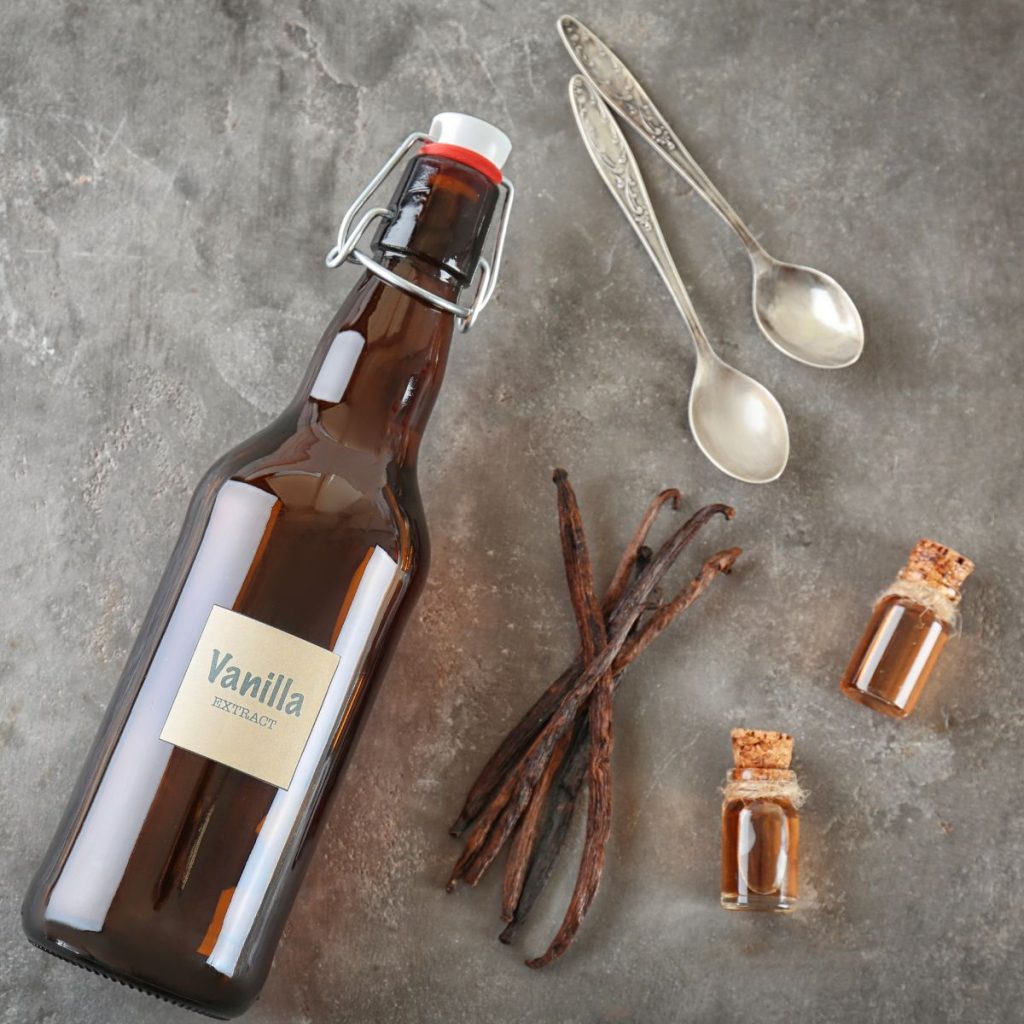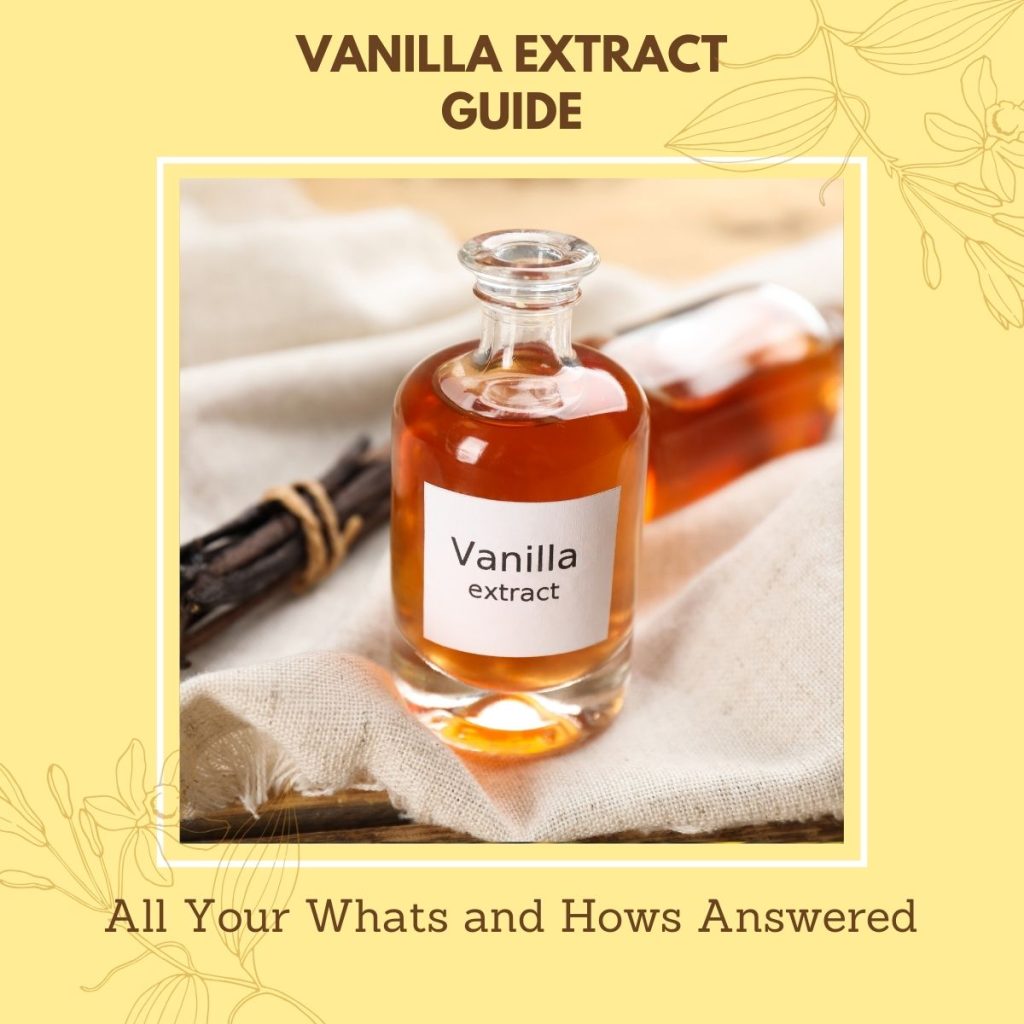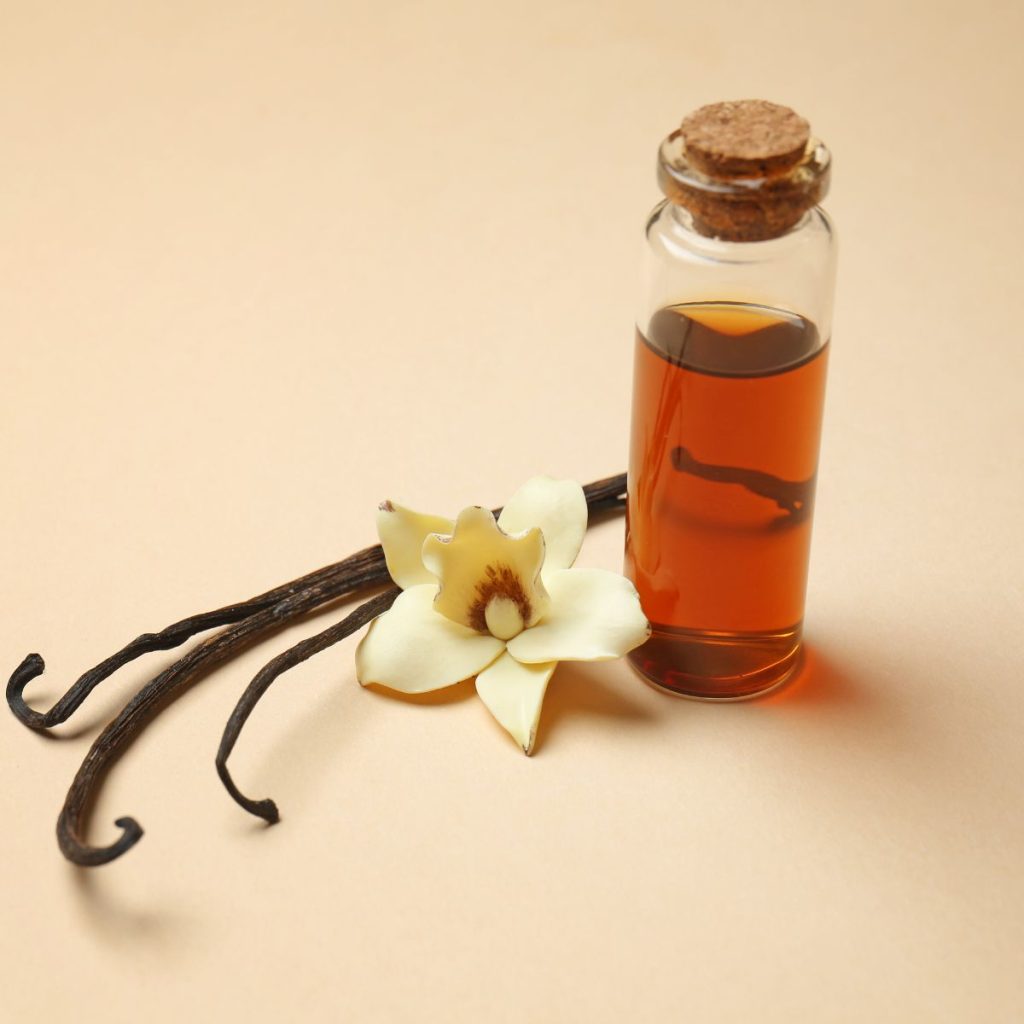Are you tired of buying store-bought vanilla extract that just doesn’t measure up? Look no further – this vanilla extract guide is here to answer all your questions about making homemade vanilla extract.
You’ll learn about different types of vanilla beans and the benefits of making your own extract. We’ll walk you through the step-by-step process and provide tips for choosing the right beans and alcohol.
Get ready to embark on a delightful journey into the world of vanilla extract!
Key Takeaways
- Vanilla comes in various forms such as beans, paste, powder, and sugar.
- Different types of vanilla have unique flavors.
- Madagascar vanilla is the most commonly available vanilla and is versatile in most baked goods.
- Homemade vanilla extract is cost-effective, allows for control of flavor, and is more aromatic than store-bought options.
First Things First: What Is Vanilla Extract?
So, you’re curious about vanilla extract? Well, let’s start with the basics.
Vanilla extract is a flavorful liquid that’s made by soaking vanilla beans in alcohol, typically vodka. The alcohol extracts the compounds and flavors from the beans, resulting in a rich and aromatic extract that’s commonly used in baking and cooking.
Now that you know what vanilla extract is, let’s delve into its origins and the different types available.

Exploring The Origins
Where did vanilla extract come from and how is it made?
Vanilla extract has a fascinating history that dates back to the ancient Mayans and Aztecs. They were the first to cultivate vanilla orchids and discovered the rich flavor and aroma of the vanilla beans.
This humble plant traveled across the globe, courtesy of explorers who were enchanted by its unique, sweet aroma. Vanilla took a surprising detour when it made a star appearance in vodka production.
Yes, you read that correctly, vodka and vanilla have ties, intertwined in a dance of flavors. The smooth quality of vodka makes an ideal base, effortlessly carrying the distinctive, full-bodied flavor of vanilla. Vodka’s neutral characteristics allow vanilla’s natural essence to shine through when making homemade vanilla extract.
The process of making vanilla extract involves extracting the flavors and aromas from the vanilla beans and infusing them into alcohol.
The result is a rich and aromatic liquid that adds depth and complexity to various dishes and desserts.
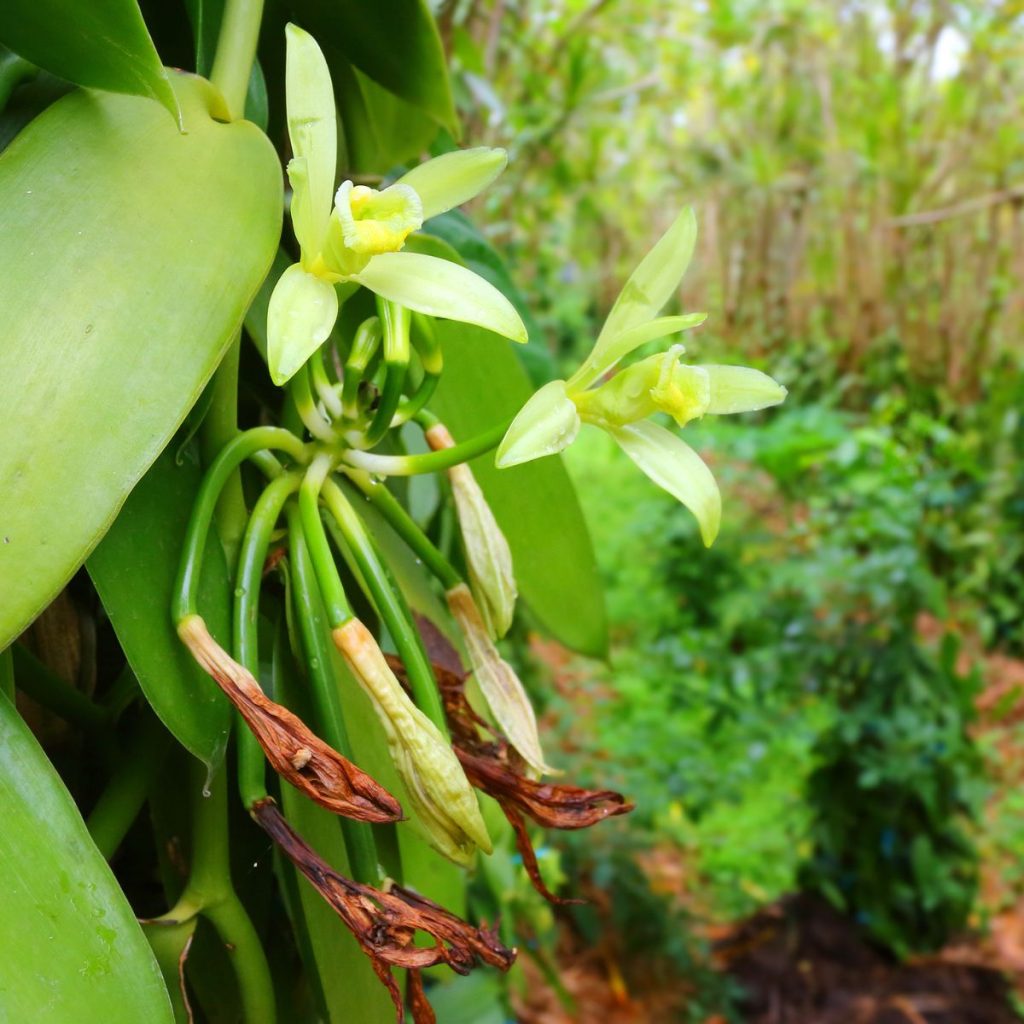
Different Types of Vanilla Extract
Just as there are varieties of the vanilla plant, so too are there different types of vanilla extract. From the robust Bourbon vanilla extract to the delicate Tahitian, each variety is a world of flavor.
The most common type is the Madagascar or Bourbon vanilla extract, prized for its traditional, full-bodied flavor and aroma. Another type, Tahitian vanilla extract, offers a lighter, floral note that enhances fruit-based dishes perfectly.
You’ll have possibly tried Mexican vanilla extract, a darker and smokier variety, that elevates chocolate dishes to new heights. And although less common, Indonesian vanilla extract brings a unique sweet-spicy essence to any recipe it touches.
Using the right vanilla extract can determine the depth and richness of your dish, painting a different palate of flavor with every splash. Not all extracts are created equal and understanding the unique profiles of each vanilla extract type will help you unlock culinary success.

How to Make Vanilla Extract at Home
After learning about what vanilla extract is, its origins, and the different types, let’s take a leap and make our own homemade vanilla extract. Yes, you heard it right; you can make aromatic and flavor-rich homemade vanilla extract right in your kitchen! Making homemade vanilla extract is not only easy but also a fun and satisfying task. Gather your vanilla beans, and let’s get started!
Preparing the Ingredients
Before you dive into the recipe, it’s crucial to carefully prepare your ingredients. To make homemade vanilla extract, gather your ingredients:
- Vanilla beans – Choose high-quality vanilla beans, such as Madagascar, Mexican, or Tahitian, for their distinct flavors.
- Alcohol – Select a 80 proof alcohol, like vodka, bourbon, brandy, or rum, to extract the vanilla flavor.
- Glass bottles or jars with tight seals – Use clean, airtight containers to store the vanilla extract and preserve its quality.
To prepare the ingredients, split the vanilla beans lengthwise and scrape out the seeds. Cut the split bean hulls into smaller pieces and add them to the container. Pour the chosen alcohol over the beans and seeds, enough to cover them. Secure the container with a tight-fitting lid and shake vigorously.
Store the container in a cool, dark place for at least two months, shaking daily initially and then weekly.

Step By Step Instructions for Making Homemade Vanilla Extract
So, you’re ready to take the plunge into making your own homemade vanilla extract? Let’s get started. Our method is straight forward and easy to follow. In reply to your cooking concerns, I can assure you, there’s nothing like homemade! When you make your own, there’s the added appeal of customizing to suit your taste.
To start making your own homemade vanilla extract, gather your prepared vanilla beans and alcohol in a glass bottle or jar. Follow these step-by-step instructions to create your own flavorful extract:
| Step | Instructions |
|---|---|
| 1 | Split the vanilla beans lengthwise and scrape out the seeds. |
| 2 | Cut the split bean hulls into smaller pieces and add them to the container. |
| 3 | Pour vodka or other alcohol over the beans and seeds, enough to cover them. |
| 4 | Secure the container with a tight-fitting lid and shake vigorously. |
| 5 | Store the container in a cool, dark place for at least two months, shaking daily initially and then weekly. |
These simple steps will allow the vanilla beans to infuse the alcohol, creating a rich and aromatic extract. Remember to be patient and let the extract age for the best results. In a couple of months, you will have your own homemade vanilla extract ready to enhance your favorite recipes. Enjoy the satisfaction of creating something delicious and unique!

What are Vanilla Beans?
As a chef from Japan, allow me to reveal some mysteries behind vanilla beans. These aren’t your typical beans. Not one bit. They’re long, thin pods from a variety of orchid plant, unlike common beans.
Do you know why we always seem to mention vanilla beans in confectionery? Well, it’s their intense aroma and sweet flavor that leaves a delightful aftertaste in your mouth. Many don’t know, but there’s a touch of art involved in growing, harvesting and curing these precious vanilla beans. This meticulous process largely attributes to their value.
Vanilla beans are the star ingredient that gives vanilla extract its rich and complex flavor. These beans are the seed pods of the vanilla orchid plant and contain thousands of tiny black seeds. They’ve a distinct aroma and flavor profile that ranges from creamy and sweet to floral and fruity, depending on the variety.
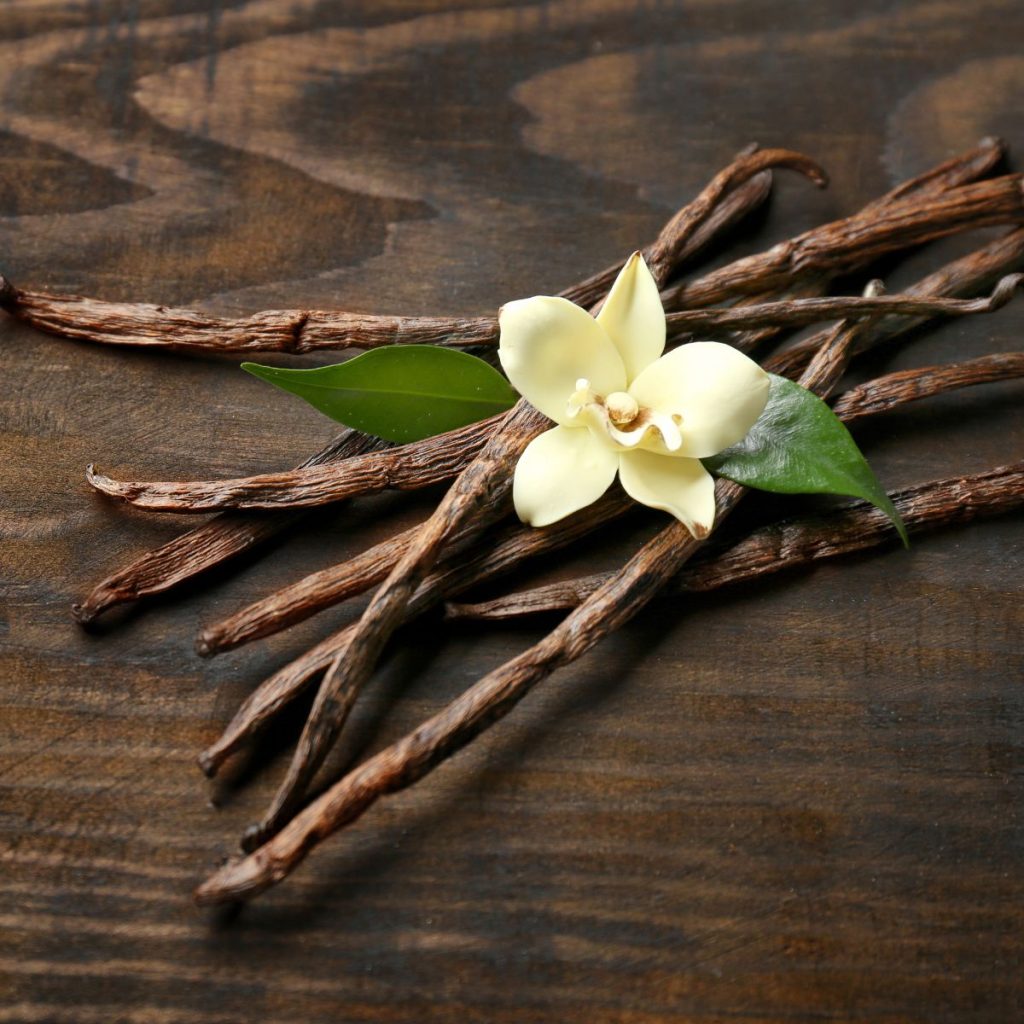
Understanding the Role of Vanilla beans in Recipes
Understanding the role of vanilla beans in recipes is vital to truly elevating your cooking. Vanilla beans are integral ingredients in many recipes because they offer a distinctive, rich flavor that’s hard to replicate.
Whether you’re whipping up a classic pastry or a gourmet dessert, these beans are key to unlocking that divine taste we associate with fine cooking. But that’s not all — vanilla beans also contain tiny seeds that are essential in many recipes for the subtle crunch and textural contrast they provide.
Here are three key points about role of vanilla beans to keep in mind:
- Flavor Enhancement: Vanilla beans add a rich, sweet, and creamy flavor to recipes. They enhance the taste of desserts, baked goods, and even savory dishes. The natural oils and compounds in vanilla beans infuse the dish with a delightful vanilla flavor that’s unmatched by other forms of vanilla.
- Aroma Boost: Vanilla beans also contribute to the aromatic profile of a recipe. When the beans are scraped and the seeds are used, they release a strong and intoxicating vanilla scent that enhances the overall sensory experience of the dish.
- Visual Appeal: Vanilla beans can also add visual appeal to your recipes. The tiny black specks from the vanilla bean seeds scattered throughout a dish create a beautiful and enticing visual effect.
Understanding the role of vanilla beans in recipes sets the stage for exploring the different types of vanilla extract, such as single-fold and double-fold, which will be discussed in the next section.
Single-Fold Vs Double-Fold Vanilla Extract
When you’re diving into the world of vanilla extract, you’ll come across the terms ‘single-fold’ and ‘double-fold’. Now, what’s the scoop on these types of extract? A single-fold vanilla extract signifies it’s made using 100 grams of vanilla beans to create a liter of extract, a consistent standard of potency.
On the other hand, double-fold vanilla extract is made with twice the number of beans, intensifying the flavor in each drop. This fold system helps to standardize the extract, ensuring it adds just the right punch to your recipes.
Many bakers use double-fold for dishes where vanilla is the star, as it packs a robust, aromatic punch. In contrast, single-fold is more commonly used in everyday baking, rounding out the flavors. Always remember, vanilla extract isn’t made overnight. It is a carefully crafted process that requires patience and passion.
Your decision between single-fold and double-fold vanilla extract revolves around the level of flavor intensity desired. Experiment and find the perfect fold for your next culinary adventure.




Konnichiwa! (Hello!) I'm Pat Tokuyama, a Japanese tofu cookbook author, who travels for music, food, and adventure. If you like Japanese tea, checkout some of the newestorganic japanese tea, matcha bowls and noren and more!
** Curious about the Plant Based Japanese Cooking Club? ** Learn more here!
Understanding the Wait Time for the Perfect Vanilla Extract
Patience is key when it comes to achieving the perfect vanilla extract, whether you’re making a single-fold or double-fold variety. Understanding the wait time for the perfect vanilla extract is crucial to ensure the best flavor and aroma.
Here are three important points to consider:
- Aging process: Vanilla extract becomes darker and more flavorful over time. The ideal wait time for optimal results is between 6 to 12 months. This allows the flavors to develop and intensify, resulting in a more robust extract.
- Storage conditions: To preserve the quality of the extract, store it in a cool, dark place, away from direct sunlight. It’s also important to shake the bottle once a week to evenly distribute the flavors.
- Adding alcohol: As the extract is used, you can replenish it by adding additional alcohol to the bottle. This helps maintain the desired strength of flavor and extends the longevity of the extract.

How to Use Vanilla Extract?
Enhance your recipes by incorporating vanilla extract, a versatile ingredient that adds depth and flavor to a variety of dishes. Whether you’re baking a batch of cookies, making a creamy pudding, or preparing a savory sauce, vanilla extract can take your culinary creations to the next level. Here are some ideas on how to use vanilla extract in your cooking:
| Dish | Usage | Tips |
|---|---|---|
| Baked Goods | Add 1-2 teaspoons of vanilla extract to cake batter, cookie dough, or pancake batter for a subtle, sweet flavor. | Use pure vanilla extract for the best results. |
| Desserts | Stir a teaspoon of vanilla extract into whipped cream, custards, or puddings for a rich and creamy taste. | Add vanilla extract to your favorite ice cream recipe for a homemade touch. |
| Beverages | Enhance the flavor of coffee, hot chocolate, or smoothies by adding a few drops of vanilla extract. | Experiment with different amounts to find your preferred level of vanilla flavor. |

How to Store Vanilla Extract?
Ahh, good friend, vanilla extract, it’s very important to store you well. Store your vanilla extract in an airtight bottle to maintain freshness – a clean glass jar or bottle can make perfect storage. Not just any bottle though. It’s best if the bottle is made of dark glass, as it helps protect the vanilla extract from sunlight’s harmful effects.
So, when you find an ideal bottle, store your extract there.
Fill the bottle, but ensure it’s not too full since the extract needs some breathing room. Then, seal your bottle tightly. Store this bottle in a cool, dark place, beyond the reach of direct sunlight. Remember not to store your vanilla extract near a heat source, or in the refrigerator.
The reason? Storing your vanilla extract under these conditions might cause the flavors to change drastically. So, handle your vanilla extract with care and love in the kitchen and it’ll reward you with its irresistible aroma and taste.

What Are the Health Benefits of Vanilla Extract?
Vanilla extract offers several health benefits that can enhance your overall well-being. This extract is a nourishing addition to your jar. When enjoyed in moderation, it stimulates heart health, promotes healthy digestion, and soothes anxiety. A jar of this enriching extract is a jar of wellness.
Not only does it add a delightful flavor to your favorite recipes, but it also contains a number of compounds that can positively impact your health.
One of the main benefits of vanilla extract is its antioxidant properties. Antioxidants help protect your cells from damage caused by free radicals, which are unstable molecules that can contribute to aging and disease.
Vanilla extract also has anti-inflammatory properties, which can help reduce inflammation in the body and potentially lower the risk of chronic diseases.
Additionally, vanilla extract may have a calming effect on the nervous system and can help promote relaxation and reduce anxiety.
Love for this extract is clear; vanilla extract is not just an ingredient, it’s a jar of health benefits.
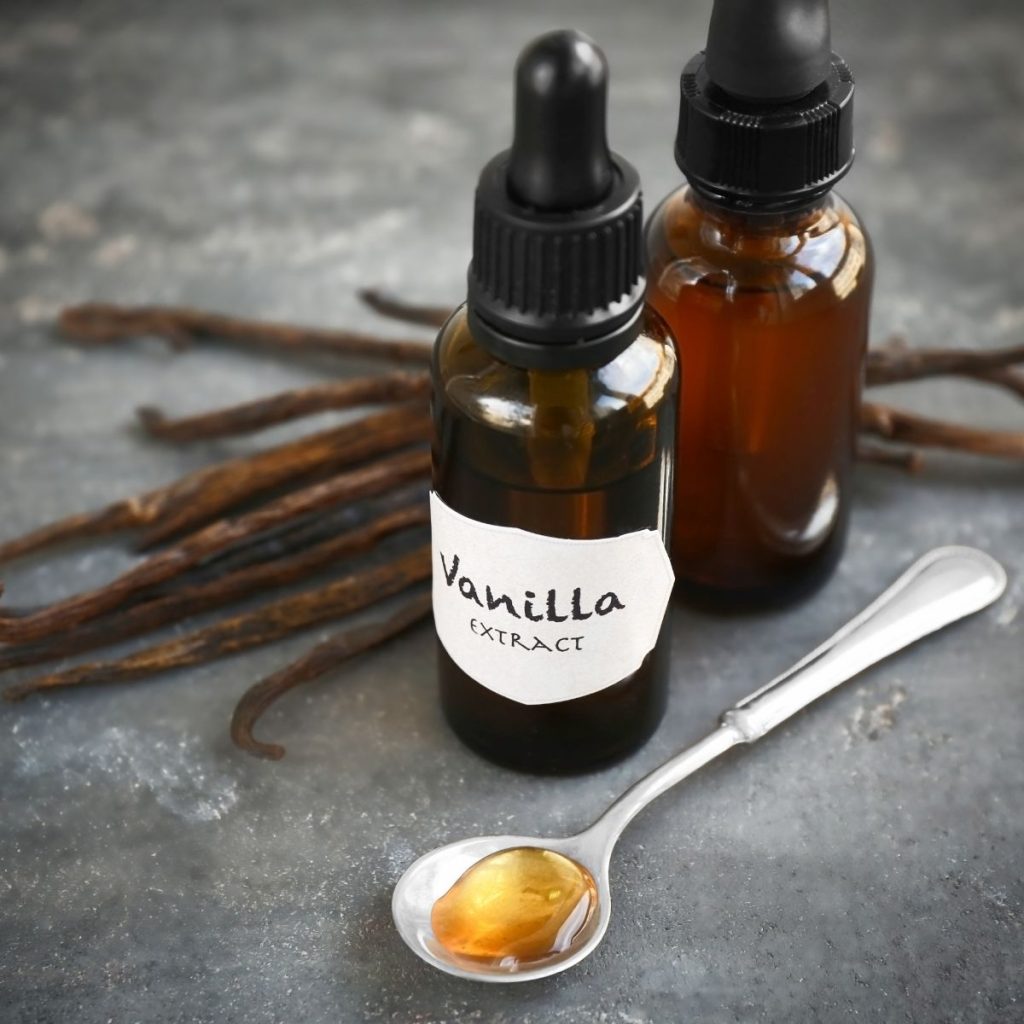
What Is Imitation Vanilla Extract?
So, you might be wondering, “What is Imitation Vanilla Extract?”. Simply put, this extract is a man-made substance that’s designed to taste like real vanilla. This type of vanilla extract isn’t derived from jars or bottles of handpicked, exotic vanilla beans. Instead, it’s developed in a laboratory and captured in jars.
Imitation Vanilla Extract is a synthetic version of vanilla flavoring. It’s made using chemicals such as vanillin, which is the primary compound responsible for vanilla’s flavor.
Here are three key differences between imitation and real vanilla extract:
- Source: Real vanilla extract is made from vanilla beans, while imitation vanilla extract is made from artificial ingredients and flavors.
- Flavor: Real vanilla extract has a complex and nuanced flavor profile, with hints of sweetness and floral notes. Imitation vanilla extract, on the other hand, often has a stronger and less subtle flavor.
- Quality: Real vanilla extract is considered to be of higher quality and is preferred by many professional chefs and bakers. Imitation vanilla extract is often used as a cheaper alternative due to its lower cost.
While imitation vanilla extract can be used in baking and cooking, it may lack the depth and complexity of flavor that real vanilla extract provides.
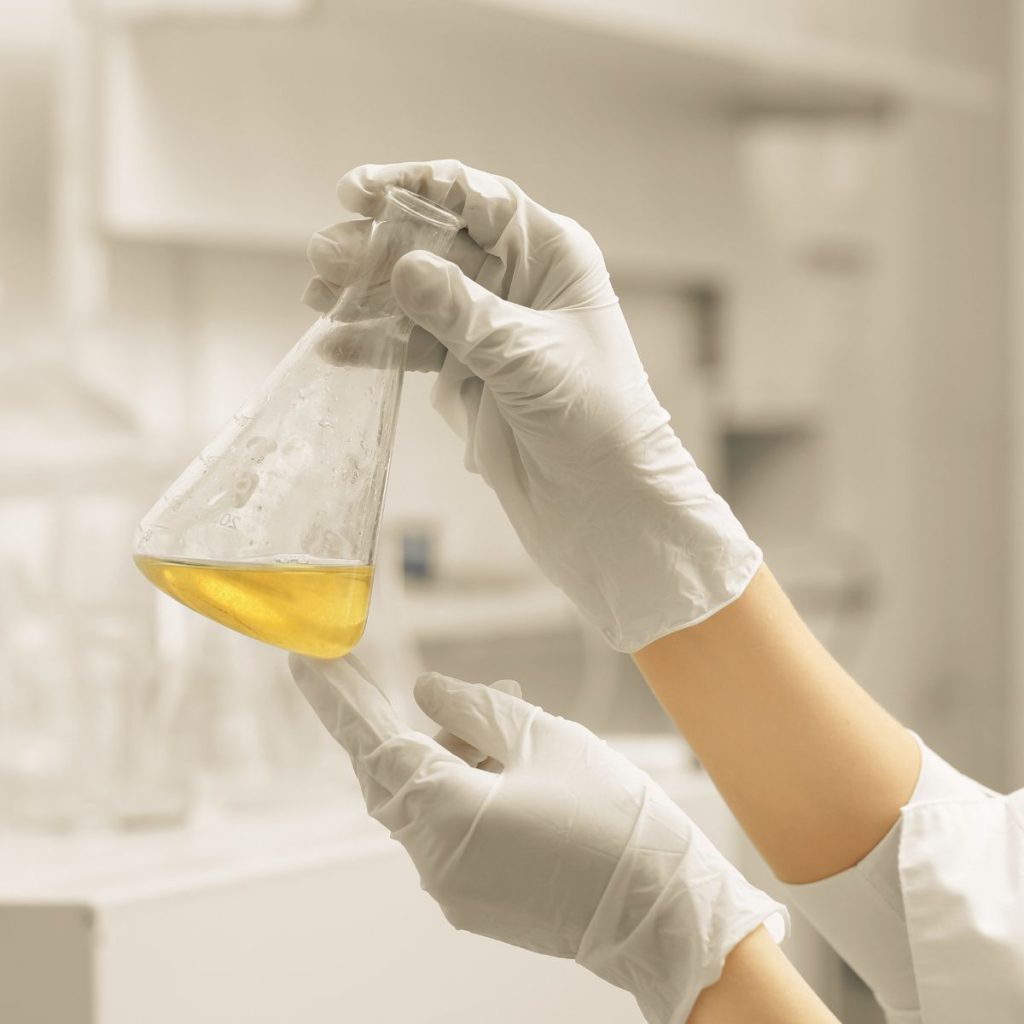
What is Vanilla Flavoring?
When you hear vanilla, what comes to mind? Is it the creamy, sweet flavor that gives your desserts a special punch? Or is it the bottles and jars you see beautifully arranged on supermarket shelves? Vanilla flavoring is more than just a pretty face in the culinary world.
Vanilla flavoring is a commonly used ingredient that adds a distinct and delightful taste to various desserts and dishes. It is derived from the vanilla bean, which is the fruit of the vanilla orchid. Vanilla flavoring can be obtained in several forms, each with its own unique characteristics. Here is a table that highlights the different types of vanilla flavoring:
| Type of Vanilla Flavoring | Description |
|---|---|
| Vanilla Extract | Liquid form of vanilla flavoring, made by soaking vanilla beans in alcohol and water. It is the most commonly used form of vanilla flavoring. |
| Vanilla Bean Paste | Thick and viscous paste made from ground vanilla beans and sugar. It has a concentrated flavor and can be used as a substitute for vanilla extract. |
| Vanilla Powder | Ground and dried vanilla beans, often mixed with sugar or other dry ingredients. It is used in recipes where liquid vanilla extract is not preferred. |
| Vanilla Sugar | Granulated sugar infused with vanilla beans or extract. It adds a subtle vanilla flavor to baked goods and beverages. |
These different forms of vanilla flavoring offer versatility in cooking and baking, allowing you to choose the one that best suits your needs and preferences.
What is Clear Vanilla Extract?
If you asked yourself about clear vanilla extract during october or september, watched some videos, you’d have made a great discovery. Clear vanilla extract is a variant of the widely known, aromatic vanilla extract, usually found in transparent bottles or jars, unlike the darker versions.
Like its counterparts, clear is made by soaking vanilla beans, yet the jars and bottles don’t end up with a colored extract. How’s it made, you may wonder?
Made mainly from vanillin rather than vanilla beans, the extract’s clear appearance owes to its non-alcoholic base, often glycerin or a similar substance. This gives it a longer shelf life and a less pronounced flavor, noted when tasting side by side.
And yes, it’s essential to read your labels before purchasing as some clear versions might contain artificial components. Great in cookies and frostings where you do not want any color alteration, clear vanilla extract adds a subtle hint of vanilla flavor.
